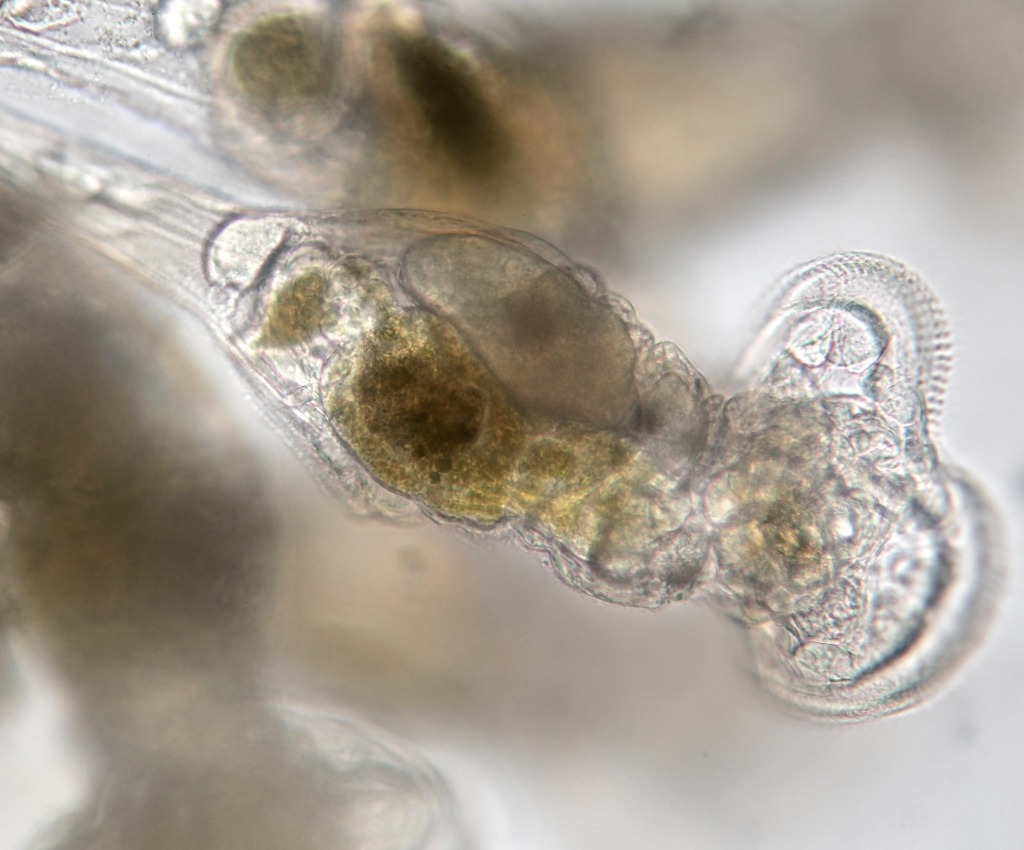
CRISPR Gene Editing in a Rotifer
August 16, 2023| |
Researchers have developed a protocol for quick and efficient CRISPR-Cas9 gene editing of the rotifer Brachionus manjavacas. The results of the study will open new possibilities for rotifer research and biological discoveries.
Rotifers have been used as a model system to study genome evolution, DNA repair, aging, and other aspects of biology. However, scientists have not been able to manipulate the genetics of rotifers for further studies. That is why researchers from the Josephine Bay Paul Center for Comparative Molecular Biology and Evolution devised a method to alter the genomes of rotifers using CRISPR-Cas9.
The team immersed the rotifers in a highly viscous solution and gave them a low-level anesthetic, which slowed them down. The researchers were then able to grab the rotifers one at a time using light suction through a hollow needle. The gene editing system was then injected into the part of the rotifer that provides nutrients to their eggs.
The researchers inactivated the developmental gene vasa, which led to the rotifers ceasing reproduction after several generations. They also turned off the DNA mismatch repair gene mlh3, which prohibited the rotifers from creating a male offspring. Finally, they inserted a stop codon cassette into mlh3, which had the same effect. Some of these mutations were passed down to the next generations.
For more information, read the journal article in PLOS Biology.
| |
You might also like:
- Researchers Edit Genomes of Microbes Growing in a Community of Different Species
- Researchers Develop CRISPR-Cas9 Editing Techniques for Ralstonia eutropha
- Scientists Develop GM Microbe for Monogastric Animal Nutrition
Biotech Updates is a weekly newsletter of ISAAA, a not-for-profit organization. It is distributed for free to over 22,000 subscribers worldwide to inform them about the key developments in biosciences, especially in biotechnology. Your support will help us in our mission to feed the world with knowledge. You can help by donating as little as $10.
-
See more articles:
-
Plant
- International Research Team Releases Complete Sequence of Einkorn Wheat Genome
- First Field Test of Stacked HT Camelina Shows Positive Results
- Researchers Find a Gene That Could Help Cotton Combat Bacterial Blight
- 2023 PH Biotech Outreach Program Finishes Strong, Encourages Youth to Support Biotech
-
Animal
- Pinoy Biotek Seminar: Mudfish Spawning Technology
- CRISPR Gene Editing in a Rotifer
- Invitation: Animal Biotechnology Symposium and Stakeholder Consultation
-
Read the latest: - Biotech Updates (November 26, 2025)
- Gene Editing Supplement (November 26, 2025)
- Gene Drive Supplement (February 22, 2023)
-
Subscribe to BU: - Share
- Tweet

